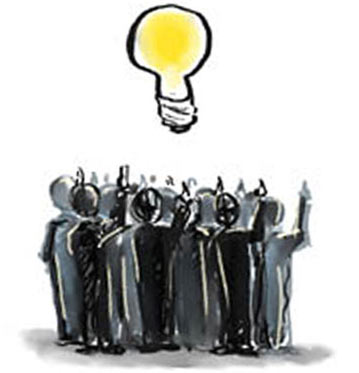By Munya Chiura
This article is cross-posted from Techzim.co.zw.
Crowdsourcing in recent years has gained significant traction around the globe. The premise behind it is the concept of maximizing or utilising masses of individuals to solve a large problem. The most visible and popular application of crowdsourcing is Wikipedia; the free collaborative online encyclopedia, which relies on volunteers all around the world and now has over 20 million articles in English in the encyclopedia.
In Africa, we are also seeing some innovative ways in which crowdsourciing is being utilised. In Kenya for example,Ushahidi put Africa’s crowdsourcing on the map, as its platform was effectively used to monitor the 2002 Kenya elections. In Zambia, BongoHive, the country’s first tech hub, has created an exciting user-generated online map which reflects the number of tech business incubation hubs that have been set up around Africa. Closer to home in Kubanata, a Zimbabwean human rights and civic organization leveraged crowdsourcing to gather information to map the Typhoid cases in Zimbabwe, providing critical data to assist with managing the epidemic.
In GrowVC’s podcast interview with Carl Esposti, founder of Crowdsourcing.org, he provides a good overview of the four major crowdsourcing models in the industry today:
1. Crowdfunding:
Crowdfunding refers to the pooling of money and resources for specific causes. This could be in the form of donations or actual equity. The most recognized global crowdfunding companies include names such as GrowVC, Kiva, Crowdcube and Kickstarter. GrowVC is currently quite active in Africa and most recently signed a partnership agreement with Mlab to promote crowdfunding for mobile entrepreneurs in Kenya.
2. Distributed Labor groups:
Distributed labour entails leveraging jobs and tasks which are traditionally assigned to one person or company to a small team. The beauty of this model is that the workforce can in fact be virtual or anywhere in the world including Africa. For example In 2009, CrowdFlower collaborated with Samasource and provided work for refugees in Kenya. The Kenyan contributors completed micro-tasks and iPhone users donated their time by checking the accuracy through the app GiveWork. There are also significant opportunities for Africa to explore distributed labour and mirror successful models in other parts of the world. Models such as UK’s PeoplePerHour and US based companies Jobbi and Hiretheworld have transformed how and where work is done globally.
3. Distributed Knowledge
Distributed knowledge is the use of crowdsourcing for the collection, sharing and dissemination of knowledge by leveraging a pool of resources. The examples given earlier, such as Ushahidi or Kubatana, demonstrates that Africa as a whole can benefit from creative and innovative applications of crowdsourcing.
4. Distributed Tools
The Distributed tools model of crowdsourcing constitutes applications, platforms and tools used for the collaboration of a project or outcome. Imagine developing a software application that needs usability testing at a fraction of the cost of usability agencies. That’s where uTest comes in. uTest is a community of over 18,000 software quality assurance and testing professionals from 180 countries including the African countries of Morocco, Algeria, Tunisia, Egypt, Mali, Senegal, Kenya, Ethiopia, and Uganda. End-to-end testing services are offered for web, desktop or mobile applications. uTest has over 100 testers in Kenya alone.
The potential of crowdsouring in Africa and its application thereof is limitless. African entrepreneurs do indeed have the ideas, talent, knowledge, expertise, and price competitiveness to compete globally by fully exploiting crowdsourcing models. One should anticipate seeing many more innovative forms and uses of crowdsourcing coming from the African continent in years to come.
About the Author
Munya Chiura is with Grow VC, a global, transparent, community-based platform dedicated to entrepreneurs and investors. Grow VC enables great ideas and great teams to get visibility with the right investing audience, funding and support.








